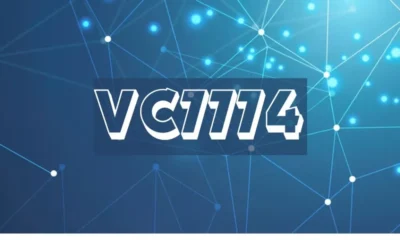News
Understanding Transâ: Breaking Language Barriers in a Globalized World

In a world increasingly connected through globalization, the ability to communicate across different languages is paramount. However, linguistic diversity presents a significant barrier to effective communication. This is where transâ comes into play, offering solutions to bridge these gaps and foster understanding on a global scale.
What is Transâ?
Transâ, derived from the Latin word “trans,” meaning “across” or “beyond,” refers to the process of translating text or speech from one language to another. It encompasses various techniques and technologies aimed at facilitating communication between individuals or groups who speak different languages.
Historical Background
The practice of transâ has ancient roots, dating back to the earliest human civilizations. From the Silk Road traders translating languages to facilitate commerce to medieval scholars translating religious texts, the need for transâ has persisted throughout history.
Importance in Modern Context
In today’s interconnected world, transâ plays a vital role in facilitating global communication, trade, diplomacy, and cultural exchange. Whether it’s translating documents, websites, or interpreting conversations in real-time, transâ has become indispensable in various domains.
Applications of Transâ
Transâ finds applications across diverse fields, serving as a catalyst for cross-cultural communication and collaboration.
Transâ in Linguistics
In the field of linguistics, transâ aids in understanding the structure and evolution of languages, facilitating research and cross-linguistic analysis. Linguists rely on translation to decipher ancient texts, preserve endangered languages, and explore linguistic diversity.
Transâ in Technology
Advancements in technology have revolutionized the field of transâ, with AI and machine learning algorithms powering sophisticated translation tools. From language translation apps to voice recognition software, technology has made transâ more accessible and efficient than ever before.
Transâ in Global Business
In the realm of global business, transâ is essential for multinational corporations operating in diverse linguistic environments. Translation services enable companies to reach new markets, localize their products, and communicate effectively with customers and stakeholders worldwide.
Challenges and Limitations of Transâ
Despite its benefits, transâ is not without its challenges and limitations, which stem from linguistic complexity, cultural nuances, and technological constraints.
Linguistic Nuances and Cultural Context
Languages are rich with nuances, idioms, and cultural references that are often challenging to translate accurately. Cultural context plays a crucial role in language interpretation, and nuances can be lost or mistranslated, leading to misunderstandings.
Accuracy and Reliability
Achieving perfect accuracy in translation remains a significant challenge, especially for complex or specialized content. Machine translation, while convenient, may produce errors or misinterpretations, particularly in context-sensitive situations.
Ethical Concerns
Transâ raises ethical considerations regarding privacy, confidentiality, and cultural sensitivity. Translators must navigate ethical dilemmas, such as preserving the integrity of confidential information and respecting cultural norms and values.
Innovations in Transâ
Despite these challenges, ongoing innovations in transâ continue to push the boundaries of linguistic communication, offering new possibilities and opportunities.
AI and Machine Learning
Artificial intelligence and machine learning algorithms are revolutionizing transâ by enabling automated translation with improved accuracy and efficiency. These technologies analyze vast amounts of linguistic data to generate contextually accurate translations.
Neural Machine Translation
Neural machine translation models, inspired by the human brain’s neural networks, have significantly enhanced translation quality. These models can interpret entire sentences or paragraphs in context, capturing subtle linguistic nuances more effectively.
Real-time Translation Tools
Real-time translation tools, such as speech-to-text and text-to-speech applications, enable instantaneous communication between speakers of different languages. These tools facilitate seamless interactions in multilingual environments, breaking down language barriers in real-time.
Future Prospects of Transâ
Looking ahead, the future of transâ holds promise for further innovation and integration into everyday life, with profound implications for global communication and collaboration.
Integration with Everyday Devices
Transâ technology is increasingly integrated into everyday devices, such as smartphones, smart speakers, and wearable gadgets. This seamless integration enables users to access translation services on the go, enhancing convenience and accessibility.
Enhancing Cross-Cultural Communication
Transâ has the potential to revolutionize cross-cultural communication by promoting understanding and empathy across linguistic divides. As technology advances, barriers to communication will continue to diminish, fostering greater harmony and cooperation among diverse communities.
Implications for International Relations
Transâ has significant implications for international relations, diplomacy, and conflict resolution. By facilitating communication between nations and cultures, transâ can help mitigate misunderstandings, build trust, and promote peaceful coexistence on a global scale.
Impact of Transâ on Society
The widespread adoption of transâ has profound implications for society, reshaping how we communicate, interact, and perceive the world around us.
Breaking Language Barriers
Transâ breaks down language barriers, allowing people from different linguistic backgrounds to communicate effectively and collaborate on shared goals. This fosters inclusivity, diversity, and mutual understanding in an increasingly interconnected world.
Promoting Multiculturalism
By facilitating communication across languages, transâ promotes multiculturalism and celebrates linguistic diversity. It encourages individuals to embrace and appreciate different cultures, fostering a more inclusive and harmonious society.
Facilitating Global Collaboration
Transâ enables global collaboration in various domains, from business and academia to diplomacy and humanitarian efforts. By transcending linguistic boundaries, it empowers individuals and organizations to work together towards common objectives, irrespective of language differences.
Conclusion
In conclusion, transâ plays a pivotal role in breaking language barriers and fostering communication in our increasingly globalized world. Despite its challenges, ongoing innovations in technology and language processing continue to enhance the accuracy, efficiency, and accessibility of translation services. As we embrace the opportunities afforded by transâ, we can look forward to a future of greater connectivity, understanding, and cooperation across linguistic and cultural divides.
FAQs
- Is transâ the same as translation?
- Transâ encompasses various techniques and technologies for translating text or speech from one language to another. While translation is a fundamental component of transâ, the term encompasses a broader range of linguistic communication methods.
- How accurate are machine translations?
- Machine translations have improved significantly in accuracy due to advancements in artificial intelligence and machine learning. However, they may still produce errors, especially with context-sensitive or culturally nuanced content.
- What are some ethical considerations in transâ?
- Ethical considerations in transâ include privacy, confidentiality, and cultural sensitivity. Translators must uphold ethical standards by respecting confidentiality agreements, preserving the integrity of sensitive information, and considering cultural norms and values.
- Can transâ tools translate spoken language in real-time?
- Yes, real-time transâ tools, such as speech-to-text and text-to-speech applications, can translate spoken language instantaneously. These tools leverage advanced algorithms to process and interpret speech in real-time, enabling seamless communication across languages.
- How does transâ impact international relations?
- Transâ plays a significant role in international relations by facilitating communication, diplomacy, and collaboration between nations and cultures. It helps bridge linguistic divides, mitigate misunderstandings, and promote peaceful coexistence on a global scale.
News
Throne of Glass Audiobook: A Captivating Journey into a Fantastical World

The Throne of Glass audiobook, based on Sarah J. Maas’s bestselling fantasy series, is an immersive experience for listeners. With its compelling characters, heart-pounding action, and magical world-building, it’s no wonder that the audiobook has captured the attention of fans and new listeners alike. The series, which started with Throne of Glass in 2012, follows the journey of Celaena Sardothien, an infamous assassin, as she navigates a treacherous world of royal intrigue, political power struggles, and personal discovery.
An Epic Fantasy Brought to Life
The Throne of Glass audiobook breathes life into Maas’s intricate world. The story takes place in a land filled with magic, dangerous secrets, and complex characters. The plot follows Celaena, who is pulled from a death sentence in a labor camp to fight in a competition to become the King’s Champion. As the story unfolds, Celaena’s hidden past and the political schemes surrounding her come to light, adding layers of complexity to a plot that blends action, romance, and fantasy.
The audiobook format enhances the reading experience by allowing listeners to immerse themselves in the world without the need to pause to turn pages. The narrator brings the characters to life, capturing their emotions, motivations, and the overall atmosphere of the book. This is especially important in Throne of Glass, where the tone and pace shift between intense battle scenes, quiet moments of introspection, and heart-pounding tension.
The Narrator: A Key to the Audiobook Experience
Narrating the Throne of Glass audiobook is the talented Elizabeth Evans. Known for her ability to switch between different voices and accents, Evans breathes energy and emotion into each character. Her portrayal of Celaena’s internal struggle and fierce determination is particularly notable. She expertly conveys the heroine’s complex layers, from her confidence as an assassin to the vulnerability she often hides.
Evans also skillfully handles the book’s various male and female characters, giving them distinct and unique voices. This helps listeners differentiate characters, especially in scenes with heavy dialogue, where the line between friends, enemies, and allies can sometimes blur. Through Evans’s performance, listeners gain a deeper understanding of the motivations and personalities of the key players in Throne of Glass.
Why the Audiobook Works So Well
Several factors make the Throne of Glass audiobook stand out:
- World-building in Audio Format: Sarah J. Maas’s world-building is already a strong point in the series, and the audiobook takes it to another level. The rich descriptions and the atmosphere Maas creates come to life with sound, allowing listeners to visualize the landscapes, castles, and magical settings with greater ease.
- Engagement with the Characters: Hearing the characters’ voices adds a new layer of engagement, especially for fans of the series who are familiar with the books. The nuances in Evans’s performance make the characters feel even more real, and for new listeners, it’s an easy way to connect with their emotions and struggles.
- Flexible Listening: Audiobooks offer flexibility for those who enjoy multitasking or prefer to consume stories while commuting, exercising, or relaxing. For those who don’t have the time to sit down and read a physical book, the Throne of Glass audiobook allows listeners to experience the full story while going about their daily routines.
- Emotional Impact: The combination of Sarah J. Maas’s storytelling and Elizabeth Evans’s narration amplifies the emotional highs and lows of the book. From the fierce determination of Celaena to the heartache, suspense, and tension that fill the story, the audiobook format allows the listener to feel the story’s emotional pulse in a very personal way.
A Must-Hear for Fantasy Fans
The Throne of Glass audiobook is perfect for both fans of the series and those just beginning their journey into this captivating fantasy world. The skillful narration, combined with the immersive storytelling, makes this a great way to experience Sarah J. Maas’s epic tale.
For those unfamiliar with the series, the audiobook provides an easy entry point into the world of Celaena Sardothien, her allies, and enemies. With its blend of high stakes, romance, and adventure, the Throne of Glass audiobook is not just for fans of fantasy but for anyone who enjoys a well-told, fast-paced story.
Conclusion
Whether you’re a die-hard fan or a newcomer to the Throne of Glass series, the audiobook is an incredible way to experience the story. The skillful narration by Elizabeth Evans brings Sarah J. Maas’s intricate world and complex characters to life in a way that keeps listeners hooked from start to finish. If you love epic fantasies full of intrigue, magic, and unexpected twists, the Throne of Glass audiobook is an essential addition to your listening library.
News
Fire and Blood Audiobook: A Journey into the Targaryen Legacy

Fire and Blood Audiobook, written by George R.R. Martin, is a historical fantasy novel set in the world of Westeros, specifically focusing on the rise and fall of House Targaryen. This gripping tale, which serves as a prequel to Martin’s A Song of Ice and Fire series, delves into the complex and often brutal history of the Targaryen dynasty, from Aegon the Conqueror’s unification of the Seven Kingdoms to the beginning of the civil war known as the Dance of the Dragons. For fans of the Game of Thrones universe, the Fire and Blood audiobook offers a unique way to experience this richly detailed world, with an added dimension of immersive narration.
The Story of House Targaryen
Fire and Blood takes readers on a journey through the early days of House Targaryen, a family of dragonlords who ruled Westeros for nearly 300 years. The book is structured as a historical account, presented as a fictional manuscript written by the character Archmaester Gyldayn. It explores pivotal moments in Targaryen history, such as the conquest of the Seven Kingdoms, internal family struggles, dragon battles, and the dynastic intrigues that characterize much of the Targaryen rule.
The book is divided into multiple parts, each covering a significant era in Targaryen history, including the conquest by Aegon I Targaryen, the subsequent generations of kings and queens, and the eventual fall of the dynasty. Major events such as King Viserys I’s reign, the civil war between the factions of Rhaenyra and Aegon II (the Dance of the Dragons), and the disastrous end of the dragons themselves are explored in great depth.
The Fire and Blood Audiobook Experience
The Fire and Blood audiobook offers an opportunity to experience George R.R. Martin’s epic tale in a more dynamic format. Audiobooks have become an increasingly popular way to consume literature, offering the convenience of enjoying a story on the go, whether during commutes, workouts, or household chores. But what sets this audiobook apart is its incredible narration, which enhances the depth of the story and immerses listeners into the world of Westeros like never before.
The audiobook is narrated by Simon Vance, a veteran voice actor with a long history of narrating complex fantasy and historical novels. His nuanced delivery brings the rich history of House Targaryen to life, adding layers of emotion, tension, and drama to the characters and events in the book. Vance’s voice changes to suit the varying personalities of key figures, from the wise and calculating Aegon I to the fierce and ambitious Rhaenyra Targaryen, making it easy for listeners to engage with the material.
One of the standout aspects of the audiobook is how it handles the complex political intrigue, intricate family dynamics, and epic battles that define the Targaryen legacy. Vance’s dramatic pacing helps to elevate the tension during key moments, such as the dragon battles or the devastating betrayals within the Targaryen family. The intense emotions of love, betrayal, greed, and ambition are conveyed effectively through his voice, creating a highly immersive listening experience.
Why Listen to the Fire and Blood Audiobook?
- Enhanced Immersion: Audiobooks allow listeners to experience the story in a more cinematic way, which is especially effective for the high-stakes drama and world-building present in Fire and Blood. The vocal performance by Simon Vance adds another layer to the material, giving each character a distinct voice that makes the story more engaging.
- Accessibility: For those who are busy with their daily lives or prefer listening to stories rather than reading, the Fire and Blood audiobook provides a flexible option. Whether you’re commuting, doing chores, or exercising, you can immerse yourself in the history of House Targaryen without needing to sit down with a physical book.
- Rich Narration: Simon Vance’s voice acting brings George R.R. Martin’s intricate world to life. His ability to differentiate characters with varying tones, accents, and emotions enhances the understanding of the intricate political and familial relationships that define the Targaryen dynasty.
- Detailed World-Building: Westeros is a world filled with deep lore, and Fire and Blood is no different. The audiobook allows listeners to dive into the political complexities and intricate storytelling that has made the A Song of Ice and Fire series so beloved. The narration ensures that even the most complicated details are clear and engaging.
- Perfect for Fans of the Show: If you’re a fan of Game of Thrones and enjoyed the television series, the Fire and Blood audiobook offers the chance to dive deeper into the world of Westeros. While the show focused mainly on the later Targaryen generations, Fire and Blood provides the backstory of the entire dynasty, offering rich context for the events and characters that fans loved on screen.
Final Thoughts
For fans of A Song of Ice and Fire, Game of Thrones, or epic fantasy in general, the Fire and Blood audiobook is an excellent way to explore the deep and tumultuous history of House Targaryen. With Simon Vance’s masterful narration, listeners can dive into the epic tale of dragons, kings, and queens that shaped the world of Westeros. Whether you’re a longtime fan of George R.R. Martin’s work or just discovering the Targaryen dynasty, this audiobook promises an engaging and immersive experience that brings the rich history of Westeros to life in a whole new way.
News
NZBgeek: Exploring the Top NZB Indexer for 2024
In the world of Usenet, NZBgeek files are essential for accessing a massive archive of content. To make this process more manageable, NZB indexers come into play, helping users easily find and download NZB files. Among these indexers, NZBgeek stands out as one of the most popular and reliable options. In this article, we will explore why NZBgeek is considered a top choice for 2024 and how it continues to enhance the Usenet experience.
What is NZBgeek?
NZBgeek is a private NZB indexer that specializes in providing a large collection of NZB files, making it easier for users to find and download Usenet content. It is known for its user-friendly interface, consistent updates, and wide range of categories that include movies, TV shows, music, games, and software. By offering high-quality NZB files, NZBgeek ensures that users can find their desired content with minimal hassle.
Key Features of NZBgeek in 2024
1. Comprehensive Content Library
One of the biggest draws of NZBgeek is its extensive library. The indexer provides access to a vast array of content, from the latest blockbuster movies to niche indie releases. Users can also find TV shows, documentaries, eBooks, software, and even niche categories such as retro gaming and audiobooks. This broad content library ensures that almost every Usenet user can find what they are looking for.
2. User-Friendly Interface
NZBgeek’s interface is intuitive and easy to navigate, making it accessible even for newcomers to Usenet. The search function is powerful and filters allow users to refine their search results to find exactly what they need. The website is regularly updated to provide new features and improved performance, making the overall experience smoother and more enjoyable.
3. API Access
For advanced users, NZBgeek offers API access, enabling the integration of the indexer with third-party downloaders or Usenet clients such as Sonarr, Radarr, and NZBGet. This feature allows for automated downloading, which is a huge benefit for users who prefer a hands-off approach. By linking NZBgeek to their media server setup, users can automatically retrieve content without having to manually download and import NZB files.
4. Community and Support
NZBgeek places a strong emphasis on its community. The platform features a forum where users can share tips, discuss new content, and get help with any issues they encounter. There is also a dedicated support team that is active in resolving any technical problems. This community-driven approach is a key reason for NZBgeek’s continued success, as users can rely on others for advice and troubleshooting.
5. High-Quality NZB Files
NZBgeek is known for its commitment to providing clean, well-organized NZB files. This helps users avoid the frustration of encountering broken or incomplete downloads. The team behind NZBgeek actively works to ensure the indexer provides reliable NZBs with proper file naming conventions and accurate metadata. As a result, users enjoy a smoother and more successful downloading experience.
6. Subscription Model
While NZBgeek is a paid service, it offers reasonable subscription tiers that are competitive with other premium NZB indexers. Subscriptions can be purchased for monthly or annual durations, and the pricing is generally affordable for users who want access to top-tier NZB files and features. Furthermore, users can opt for additional benefits like VIP membership for even better service and features.
Why Choose NZBgeek in 2024?
With so many NZB indexers available, it can be difficult to determine which one best suits your needs. Here are a few reasons why NZBgeek continues to be a top choice for many in 2024:
Reliability and Stability
NZBgeek has earned a reputation for being one of the most stable and reliable NZB indexers in the community. The service consistently updates its library and makes improvements to the site, ensuring that users have access to fresh content and a seamless experience.
Strong Community Support
The NZBgeek community is one of its standout features. From discussions on new content to troubleshooting and advice on the best Usenet clients, users can always count on the active community for support. The robust support system is essential for any platform, and NZBgeek excels in this regard.
Quality Control
NZBgeek is dedicated to maintaining the quality of its NZB files. The site’s quality control measures ensure that users don’t waste time on broken or poorly labeled files. This level of attention to detail gives users confidence when searching for and downloading content.
Customizable Options
Whether you’re a casual user or a hardcore enthusiast, NZBgeek offers a variety of features that cater to different needs. From basic searching and downloading to advanced API integrations and automation, there’s something for everyone.
Conclusion
As we move into 2024, NZBgeek continues to reign as one of the top NZB indexers on the market. With its vast content library, user-friendly interface, high-quality NZB files, and strong community support, it remains a favorite among Usenet users. For those looking for a reliable, feature-rich NZB indexer, NZBgeek is certainly worth considering. Whether you’re new to Usenet or a seasoned pro, NZBgeek has something to offer that will enhance your downloading experience.
-

 Lifestyle1 year ago
Lifestyle1 year agoJustin Billingsley Connecticut: A Journey of Impact and Leadership
-

 Fashion1 year ago
Fashion1 year agoExploring the Fascinating World of λιβαισ
-

 Tech1 year ago
Tech1 year agoUnderstanding ПРЕВОДЕЧ: Unlocking Global Communication
-

 Tech1 year ago
Tech1 year agoUnderstanding “преводеч” in the Modern World
-

 News1 year ago
News1 year agoUnveiling the Mystery: Paige Bueckers’ Boyfriend Revealed
-

 Tech1 year ago
Tech1 year agoGeekzilla.tech Honor Magic 5 Pro Ultimate Guide.
-

 Business1 year ago
Business1 year agoExploring the Success Story of VC7774
-

 Blog1 year ago
Blog1 year agoThe Ultimate Guia Silent Hill Geekzilla: Comprehensive Guide
